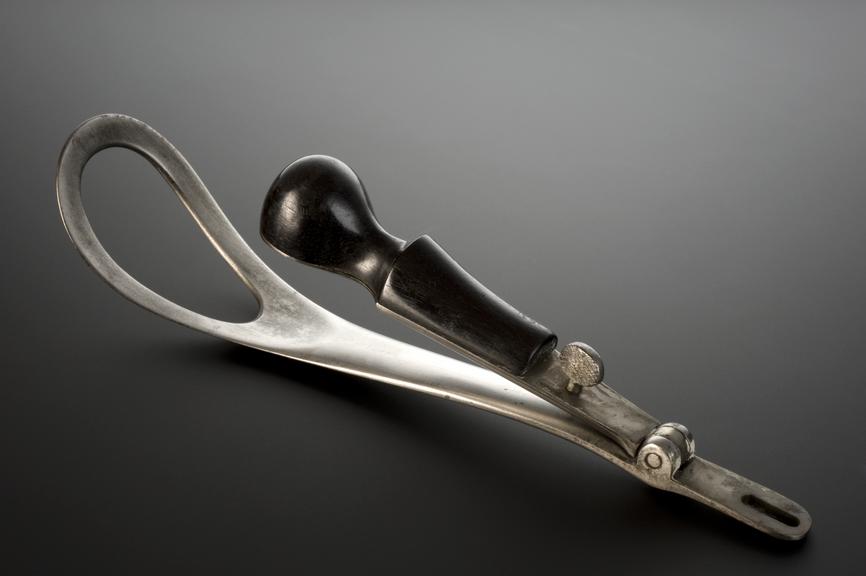

Obstetrical vectis, United Kingdom, 1801-1900
- Made:
- 1801-1900 in United Kingdom




Vectis, Lowndes, folding type, steel and ebony, by Fouracres, British(?), 19th century
A vectis altered the position of the baby’s head. It also acted as a lever to ease the head out. It was used by obstetric physicians attending the birth of a child. The vectis was Dutch in origin. This 1800s example is spoon-shaped. It is made of steel and ebony with a folding handle. Other designs were originally made of bone or ivory and often covered in leather. This was very unhygienic. It led to many women dying of puerperal fever. This is a fatal form of blood poisoning contracted during the birth from unsanitary instruments.
Details
- Category:
- Obstetrics, Gynaecology & Contraception
- Collection:
- Sir Henry Wellcome's Museum Collection
- Object Number:
- A615376
- Measurements:
-
overall: 300 mm x 50 mm, .185kg
- type:
- obstetrical vectis




